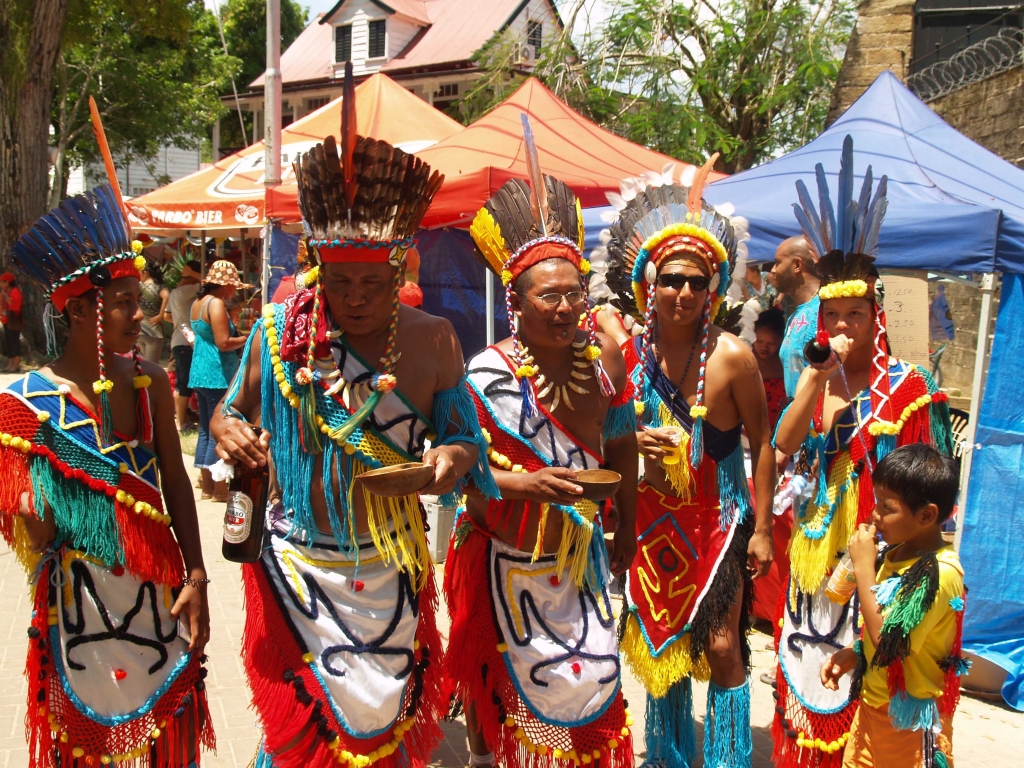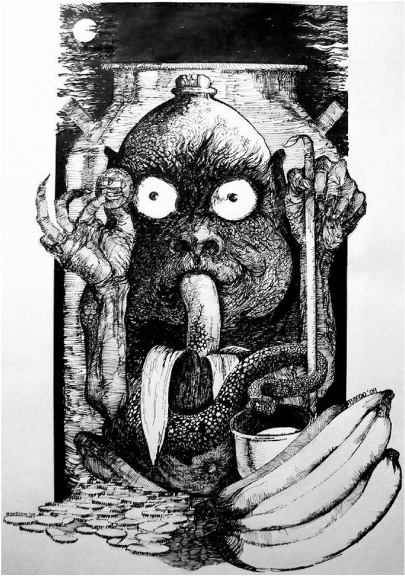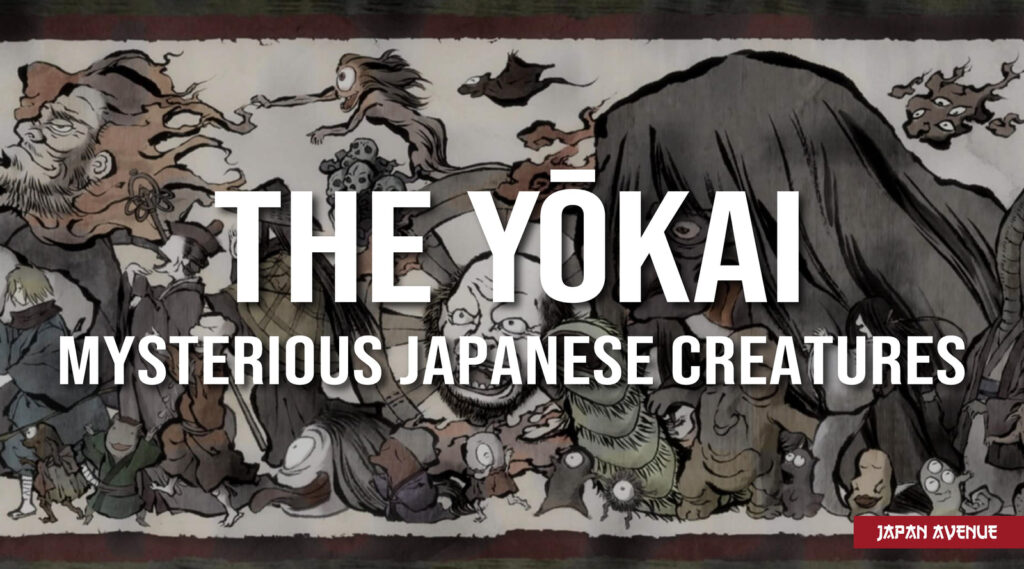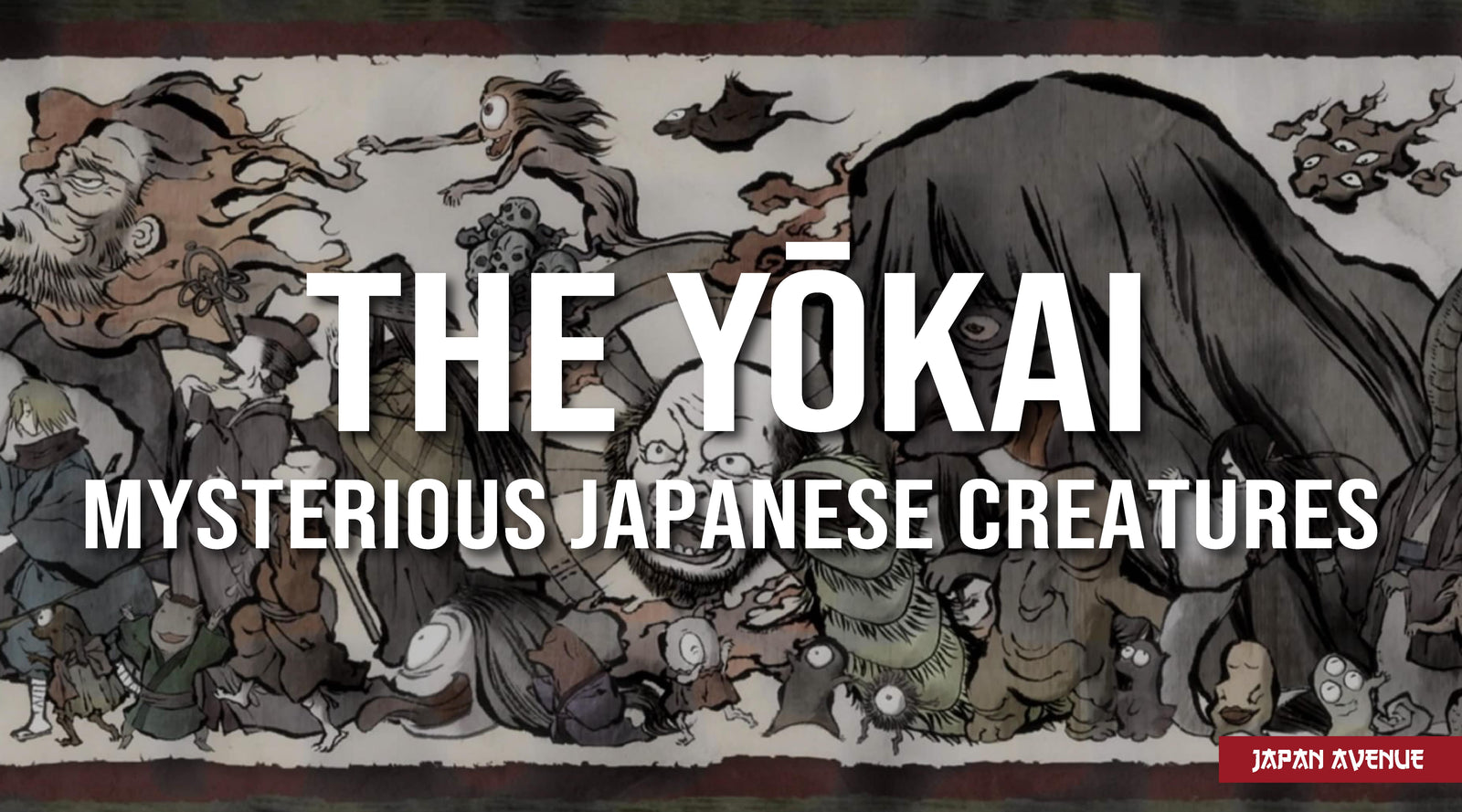Have you ever heard of Surinamese folklore? It’s a captivating world filled with tales of mythical creatures, supernatural beings, and ancient traditions. From the mischievous Powisi spirits to the wise Anansi spider, Surinamese folklore offers a rich tapestry of stories that have been passed down through generations. In this article, you’ll delve deeper into the fascinating world of Surinamese folklore and discover the unique and enchanting stories that it holds.
In Surinamese folklore, you’ll encounter a wide array of mythical creatures that are both intriguing and sometimes terrifying. One such creature is the Soucouyant, a shapeshifting witch who sheds her skin at night to roam freely. The thought of encountering a Soucouyant may send shivers down your spine, but it also adds a thrilling element to the folklore. Another fascinating character is the Anansi spider, a trickster figure known for his cunning and wit. In Surinamese folklore, Anansi is often portrayed as both a hero and a troublemaker, weaving elaborate webs of deceit and mischief. These tales not only entertain, but they also provide valuable life lessons and cultural insights. So, if you’re curious to learn more about the captivating world of Surinamese folklore, keep reading, and let the enchantment unfold.
Origins of Surinamese Folklore
Influence of Indigenous Peoples
The origins of Surinamese folklore can be traced back to the rich cultural heritage of the country’s indigenous peoples. Suriname is home to several indigenous tribes, such as the Arawak, Carib, and Warao, who have inhabited the region for centuries. These indigenous communities have contributed significantly to the folklore of Suriname through their stories, beliefs, and customs.
The indigenous peoples have a deep connection to nature and believe in the existence of spiritual entities that govern the natural world. They have stories and myths that explain the creation of the universe, the origin of animals and plants, and the relationship between humans and nature.
Connections to African Traditions
Surinamese folklore is also heavily influenced by the traditions brought to the country by enslaved Africans during the colonial era. African slaves brought with them a rich heritage of oral storytelling, rituals, and spiritual practices that continue to shape Surinamese folklore to this day.
The African influence is evident in the beliefs surrounding spiritual entities and deities. For example, the Surinamese folklore includes stories of Anansi, the trickster spider, who is a prominent figure in West African mythology. Anansi is known for his cleverness and ability to outsmart others, and his stories often carry moral lessons.
Incorporation of European Customs
Another significant influence on Surinamese folklore comes from the European settlers who colonized the region, primarily the Dutch and British. European customs and traditions, such as Christmas, New Year’s, and Easter, have been incorporated into Surinamese folklore over time.
These European customs have been merged with African and indigenous beliefs, resulting in unique and distinct traditions. For example, the celebration of Christmas in Suriname includes elements of both Christian and African spiritual beliefs, with rituals and practices specific to the Surinamese context.
Traditional Beliefs and Mythology
Spiritual Entities and Deities
Surinamese folklore is teeming with spiritual entities and deities that play a vital role in the lives of the people. These entities are believed to have control over various aspects of human existence and the natural world.
One prominent spiritual entity in Surinamese folklore is the “Wisi” or “Winti.” The Winti are ancestral spirits that are worshipped and invoked during religious ceremonies and rituals. Each Winti is associated with specific qualities and abilities, such as healing, wisdom, and protection.
Another essential deity in Surinamese folklore is Papa Godu or Gran Gado, who is regarded as the creator of the universe. Papa Godu is associated with the sun, and it is believed that he oversees the well-being of the world.
Legends and Creation Stories
Surinamese folklore is filled with captivating legends and creation stories that offer insights into the rich cultural history of the country. These stories explain the origins of various natural phenomena, such as the creation of rivers, mountains, and animals.
One such tale is the story of “Tapu na Mama Aisa,” which recounts the creation of the Tapu River by the mythical hero Tapu. According to the legend, Tapu was a powerful warrior who fought against evil spirits and created the Tapu River to protect the people from harm.
Another popular legend is the story of “Matu Konde,” which explains the origin of the North Coast of Suriname. Matu Konde is a giant turtle who fell into the sea after being chased by hunters. The impact of his fall created the coastline and formed the various islands along the coast.
Superstitions and Belief in Magic
Surinamese folklore is also filled with superstitions and a belief in magic. These beliefs stem from the cultural practices and spiritual traditions passed down through generations.
One prevalent superstition in Suriname is the belief in “jorka,” which is the power of the evil eye. It is believed that certain individuals possess the ability to cast spells or harm others through their gaze. To protect themselves, people often wear amulets or use rituals to ward off the evil eye.
Another belief in Surinamese folklore is the practice of “wisi kolo,” which involves using herbs and potions to cast spells or heal ailments. These traditional healing practices are often performed by shamans who possess extensive knowledge of medicinal plants and their healing properties.

Traditional Music and Dance
Rhythms and Instruments
Surinamese folklore is vibrant and alive in its traditional music and dance forms. The country’s diverse cultural heritage is reflected in the rhythmic beats, melodious tunes, and unique instruments used in traditional Surinamese music.
One popular Surinamese musical genre is “kaseko,” which originated from the Afro-Surinamese communities. Kaseko is characterized by its infectious rhythms, syncopated beats, and the use of traditional instruments such as the drum, trumpet, saxophone, and guitar.
Another traditional Surinamese music form is “sele,” which has its roots in the Javanese community. Sele music incorporates traditional Javanese instruments like the gamelan, kendang, and saron, creating a distinctive sound that is both enchanting and rhythmic.
Cultural Significance of Dance
Dance plays a significant role in Surinamese folklore, as it is considered a form of cultural expression and storytelling. Traditional Surinamese dances are often performed during celebrations, rituals, and social gatherings, providing a visual representation of the country’s diverse cultural heritage.
One popular Surinamese dance form is “kawina,” which originated from the Creole community. Kawina dance is known for its energetic movements, hip swings, and foot stomping, accompanied by the vibrant rhythms of the kaseko music.
Another traditional Surinamese dance style is the “Tepu,” which is performed by the indigenous peoples. Tepu dancing is characterized by its graceful movements, symbolic gestures, and elaborate costumes, reflecting the indigenous connection to the natural world.
Troupes and Performances
In Suriname, traditional music and dance are often performed by troupes, which are organized groups of musicians and dancers dedicated to preserving and promoting the country’s folklore.
Troupe performances are a common sight during cultural festivals and celebrations, where they showcase the traditional music and dance forms of Suriname. These performances serve as a means to educate, entertain, and foster a sense of pride in the cultural heritage of Suriname.
Cultural Celebrations and Festivals
Paramaribo Carnival
One of the most vibrant and anticipated cultural celebrations in Suriname is the Paramaribo Carnival. This annual event takes place during the pre-Lenten period and showcases the diverse cultural traditions of Suriname.
The Paramaribo Carnival features colorful parades, extravagant costumes, and lively music and dance performances. People from all walks of life come together to celebrate, creating an atmosphere of joy, unity, and cultural appreciation.
Javanese Divali
Divali, also known as the Festival of Lights, is a significant celebration for the Surinamese Javanese community. This Hindu festival marks the victory of light over darkness and good over evil.
During Divali, homes and temples are decorated with colorful lights and oil lamps called “diyas.” Traditional Javanese music, dance, and religious rituals are performed to honor the deities and seek blessings for prosperity and well-being.
Maroon Day Celebration
The Maroon Day Celebration is a vibrant and spirited festival held annually to commemorate the emancipation and cultural heritage of the Maroon community in Suriname. The Maroons are descendants of enslaved Africans who escaped and formed independent communities in the country’s interior.
The Maroon Day Celebration showcases the unique customs, music, dance, and culinary traditions of the Maroon culture. The festival includes traditional performances, storytelling, and culinary delights, providing a glimpse into the history and resilience of the Maroon community.

Traditional Clothing and Accessories
Traditional Dresses and Attire
Surinamese folklore is also reflected in the traditional clothing and attire worn by different cultural groups in the country. These garments are not only a reflection of cultural identity but also serve as a way to preserve and honor Surinamese traditions.
In the Creole community, women often wear colorful dresses called “koto” and headscarves known as “angisa.” The koto is a floor-length dress with a tight-fitting bodice and a voluminous skirt, often adorned with intricate embroidery or lace. The angisa is a triangular head wrap with a unique folding technique that varies depending on the occasion and marital status of the wearer.
The Javanese community in Suriname is known for their traditional attire called “kebaya.” The kebaya is a long blouse with a batik sarong, worn with a shoulder cloth and a headscarf. The kebaya is often intricately embroidered or decorated with hand-painted batik designs, reflecting the Javanese cultural motifs.
Symbolism of Colors and Patterns
Colors and patterns hold significant symbolism in Surinamese folklore, and they are often incorporated into traditional clothing and accessories as a way to convey messages and cultural values.
In the Creole community, specific colors and patterns are associated with different occasions and social events. For example, the color blue is often worn during childbirth and naming ceremonies, symbolizing protection and good fortune. Red and white are often worn during weddings, representing love and purity.
The Javanese community also attaches symbolic meanings to colors and patterns in their traditional attire. The batik designs found on the kebaya and sarong often depict floral motifs, birds, or geometric patterns. Each design carries its own symbolism, representing aspects such as fertility, prosperity, or protection.
Ornaments and Jewelry
In addition to clothing, traditional accessories and jewelry are essential elements of Surinamese folklore. These adornments hold cultural, spiritual, and symbolic significance and are often passed down through generations.
One popular traditional ornament in Suriname is the “tori,” a gold necklace worn by Creole women. The tori is often adorned with intricate designs and precious gemstones, symbolizing beauty, wealth, and status.
The Javanese community is known for their love of jewelry, particularly gold pieces. Men and women wear gold rings, bracelets, and earrings that are often intricately crafted with traditional motifs. Gold jewelry is seen as a symbol of prosperity and is often worn during special occasions and ceremonies.
Traditional Food and Cuisine
Creole Dishes and Flavors
Surinamese folklore is also deeply intertwined with traditional food and cuisine. The culinary traditions of Suriname reflect the cultural diversity of the country, with each cultural group contributing to a rich tapestry of flavors and dishes.
Creole cuisine, influenced by African, indigenous, and European traditions, is known for its bold flavors and use of local ingredients. Dishes such as “pepperpot,” a hearty meat stew made with cassava, spices, and palm sugar, and “moksi alesi,” a flavorful rice dish mixed with various meats and vegetables, are staples in Creole households.
Indigenous Culinary Traditions
The indigenous communities of Suriname have their own culinary traditions that have been passed down through generations. These traditions emphasize the use of locally sourced ingredients and reflect the deep connection between nature and food.
One well-known indigenous dish is “kassiri,” a fermented cassava bread traditionally prepared by the Warao people. Kassiri is made by grating cassava and fermenting it to produce a sour and chewy bread-like substance. It is often served with fish or game meat and is considered a delicacy in the indigenous communities.
Influence of Indian and Javanese Cuisine
The Indian and Javanese communities in Suriname have also made significant contributions to the country’s culinary landscape. Indian cuisine, with its aromatic spices and bold flavors, has become an integral part of Surinamese cuisine.
Dishes such as “roti,” a flatbread served with curries and chutneys, and “bara,” a deep-fried lentil dough topped with chutney and vegetables, are popular among Surinamese of Indian descent.
Javanese cuisine, with its rich flavors and use of herbs and spices, has also left its mark on Surinamese cuisine. Dishes such as “nasi goreng,” a fried rice dish with a variety of vegetables and meats, and “gulai,” a spicy meat or vegetable curry, are enjoyed by Surinamese of Javanese heritage.

Folklore in Oral Tradition
Storytelling and Oral History
Storytelling has long been a cherished tradition in Surinamese folklore, serving as a means of passing down cultural knowledge, values, and beliefs from one generation to the next.
Storytellers, often elders or shamans, play a crucial role in preserving Surinamese folklore through their vivid narratives and captivating performances. They share tales of adventure, mythical creatures, and moral lessons that convey important cultural messages.
Oral history is also an essential component of Surinamese folklore, as it allows the people to connect with their ancestors and understand their place in the world. Through oral history, Surinamese communities maintain a sense of identity and continuity with their past.
Moral Lessons and Proverbs
Surinamese folklore is rife with moral lessons and proverbs that serve as guides for ethical behavior and decision-making. These lessons are often conveyed through fables, animal tales, and legends, teaching important values such as honesty, respect, and responsibility.
One well-known Surinamese proverb is “No de set’ en, den foe prede” (Never count the blessings before they happen). This proverb emphasizes the value of patience and the importance of appreciating what one has in the present moment.
Another popular lesson reflected in Surinamese folklore is the belief in the interconnectedness of all living beings. Stories often teach the importance of harmonious relationships with nature and the need to protect and care for the environment.
Endurance of Traditional Tales
Despite the challenges posed by modernization, Surinamese folklore has remained resilient and continues to be passed down through generations. The oral tradition of storytelling ensures that these tales remain alive, evolving, and adapting to the changing world.
Efforts are also being made to preserve Surinamese folklore through written collections, recordings, and digital platforms. These initiatives aim to safeguard the stories, beliefs, and customs of Suriname, ensuring that they are accessible to future generations.
Healing Practices and Herbal Medicine
Role of Shamanism and Spiritual Healing
In Surinamese folklore, healing practices and herbal medicine are deeply rooted in cultural beliefs and the spiritual realm. Shamanism, practiced by indigenous and Maroon communities, plays a significant role in traditional healing methods.
Shamans, known as “matapi,” are regarded as spiritual healers with the ability to communicate with the spirit world. They facilitate the healing process through rituals, ceremonies, chants, and the use of medicinal plants.
The belief in spiritual healing is also linked to the concept of “balance” or “spiritual equilibrium,” which holds that illness and disease occur when there is an imbalance between the physical, emotional, and spiritual aspects of a person.
Traditional Remedies and Plants
Herbal medicine is an integral part of Surinamese folklore and has been practiced for generations. Suriname’s diverse flora provides an abundance of medicinal plants that are used to treat various ailments and promote overall well-being.
One commonly used plant in Surinamese herbal medicine is “katunturi,” also known as “chanca piedra.” The plant is believed to have diuretic and cleansing properties and is often used to treat kidney stones and urinary tract infections.
Another widely used herb is “calea zacatechichi,” known locally as “boloekoe.” This herb is traditionally used by indigenous communities to induce vivid dreams, enhance spirituality, and enhance memory.
Cultural Beliefs surrounding Health
Surinamese folklore also encompasses cultural beliefs surrounding health and illness. These beliefs often shape the way individuals approach their well-being and seek treatment.
For example, the indigenous communities of Suriname believe that illness can be caused by the intrusion of malevolent spirits or the disruption of spiritual equilibrium. Healing practices, therefore, focus not only on the physical symptoms but also on addressing the spiritual, emotional, and social aspects of the individual.
Similarly, the Maroons hold the belief that illness can result from spiritual or ancestral disturbances. Healing ceremonies often involve offerings, rituals, and drumming to restore balance and harmony within the individual and the community.

Rituals and Ceremonies
Birth and Naming Ceremonies
Surinamese folklore encompasses various rituals and ceremonies to mark significant life events, such as birth and naming ceremonies. These rituals often reflect cultural customs, beliefs, and values.
In the Creole community, for example, the birth of a child is celebrated with a “brokopondo” ceremony. During this ritual, family members and friends gather to pray, sing, and present the newborn with gifts. The ceremony serves as a way to welcome the child into the community and invoke blessings for their future.
Naming ceremonies are also an important part of Surinamese folklore, as they signify the individual’s identity and cultural heritage. Different cultures have their own unique naming rituals, which often involve the presence of family elders and the recitation of prayers or blessings.
Initiation Rites and Coming of Age
Initiation rites and coming-of-age ceremonies are prevalent in Surinamese folklore and are designed to mark the transition from childhood to adulthood.
Among the indigenous communities, initiation rites often involve rigorous physical and mental challenges to test the individual’s strength, courage, and resilience. Successful completion of these challenges signifies the individual’s readiness to assume adult responsibilities within the community.
In the Javanese community, the “siti” or “potong gigi” ceremony is a significant coming-of-age ritual for girls. During this ceremony, the adolescent girl’s teeth are filed down to signify her transition into womanhood. The ritual is accompanied by music, dance, and blessings from family members and the community.
Weddings and Marriage Customs
Weddings and marriage customs in Surinamese folklore are vibrant and diverse, reflecting the cultural traditions of different communities.
In the Creole community, the wedding ceremony often involves several rituals, including the “koto dress” ritual. During this ritual, the bride is dressed in the traditional koto attire and is surrounded by her female relatives, who help her put on the dress and arrange her jewelry. This ritual signifies the bride’s transformation into a married woman.
The Javanese community celebrates weddings with vibrant ceremonies that include traditional music, dance, and rituals. The bride and groom exchange vows in the presence of family and community members, and the rituals are often accompanied by the serving of traditional Javanese dishes.
Social Structure and Community Dynamics
Importance of Ancestry and Kinship
Surinamese folklore places significant importance on ancestry and kinship, emphasizing the connections between individuals and their communities.
The concept of “famiri” or “famiri bondoe” (family bond) is central to Surinamese cultural dynamics. It represents the sense of unity, loyalty, and mutual support within families and extended kinship networks.
Ancestry is also highly valued in Surinamese folklore, and individuals often take pride in tracing their family lineage back to their ancestors. Stories and oral traditions play a crucial role in preserving and passing down this ancestral knowledge.
Respect for Elders and Authority
Respect for elders and authority figures is deeply ingrained in Surinamese folklore and is considered a fundamental aspect of cultural values.
Elders are regarded as repositories of wisdom, knowledge, and cultural heritage. They play vital roles in passing down traditions, teaching moral values, and guiding the younger generations. Their advice and opinions are valued, and their wisdom is sought in matters involving family, community, and decision-making.
Respect for authority is also emphasized in Surinamese folklore. Leaders and elders are seen as the guardians of tradition and cultural continuity, and their decisions are expected to be followed and respected.
Gender Roles and Hierarchies
Surinamese folklore reflects traditional gender roles and hierarchies prevalent in the society. These roles often shape the division of labor, responsibilities, and expectations within different cultural communities.
In many cultural traditions, women are considered the caretakers of the household and are responsible for domestic duties, childcare, and maintaining the family unit. Men often take on roles that involve providing for their families, participating in community affairs, and engaging in labor-intensive activities.
While these traditional gender roles are still prevalent, Surinamese society is evolving, and there is a growing recognition of gender equality and the importance of empowering women to participate fully in all aspects of society.
Modern Challenges and Preservation Efforts
Effects of Globalization and Urbanization
Surinamese folklore faces challenges in the face of globalization and urbanization. As the country becomes more interconnected with the global community, there is a risk of cultural erosion and the dilution of traditional practices and beliefs.
Modernization and urbanization have also led to the migration of Surinamese communities to cities, resulting in the fragmentation of cultural traditions and the loss of oral knowledge and practices. Younger generations, influenced by Westernization and exposure to global media, may be less inclined to learn and engage with their cultural heritage.
Revitalization and Cultural Initiatives
Despite these challenges, efforts are being made to revitalize and preserve Surinamese folklore. Cultural initiatives, government programs, and community organizations are working together to promote awareness, appreciation, and understanding of Surinamese traditions.
Traditional music and dance troupes, folklore festivals, and cultural centers are playing a crucial role in fostering the continuity of Surinamese folklore. These initiatives provide platforms for artists, performers, and storytellers to showcase their talents and pass on their knowledge and skills to future generations.
Transmission to Future Generations
Ensuring the transmission of Surinamese folklore to future generations is essential for the preservation of cultural identity and heritage. Education plays a vital role in this process, as schools and educational institutions have a responsibility to incorporate folklore and cultural traditions into their curricula.
Additionally, family and community involvement is crucial. Parents, elders, and community leaders have a responsibility to share their knowledge and stories with younger generations, fostering a sense of pride and appreciation for Surinamese folklore.
Surinamese Folklore in the Diaspora
Adaptation and Evolution of Traditions
Surinamese folklore has made its way beyond the borders of Suriname through migration and diaspora communities. Surinamese people living abroad have carried their folklore with them, adapting and evolving traditions to suit their new environments.
In the Netherlands, for example, which has a significant Surinamese diaspora population, Surinamese folklore is celebrated through festivals, cultural events, and community organizations. These initiatives aim to preserve Surinamese traditions and ensure their continuity in the diaspora.
Folklore in Migrant Communities
Surinamese folklore has also had a profound influence on the cultural fabric of other countries that have welcomed Surinamese migrants. In countries such as French Guiana and Guyana, where there are significant Surinamese communities, Surinamese folklore has become intertwined with the local cultural traditions, resulting in diverse and hybrid folklore practices.
Surinamese folklore has also influenced the cultural landscape in neighboring Caribbean islands, such as Trinidad and Tobago. Surinamese traditions, music, and dance forms have merged with local folklore, adding richness and diversity to the region’s cultural heritage.
Preserving Cultural Identity Abroad
Preserving Surinamese cultural identity in the diaspora is crucial for maintaining a sense of connection to one’s roots and fostering a strong Surinamese community abroad.
Community organizations, cultural events, and language schools play a vital role in preserving Surinamese folklore in the diaspora. These initiatives create platforms for Surinamese people to engage with their cultural heritage, share stories, and pass on their traditions to future generations.
Impact of Surinamese Folklore on Art and Literature
Depictions in Paintings and Sculptures
Surinamese folklore has had a profound impact on the art and literature of Suriname. Artists and writers have drawn inspiration from the rich tapestry of folklore to create paintings, sculptures, and literary works that reflect the cultural diversity and vibrant traditions of the country.
Paintings often depict scenes from folklore, such as mythical creatures, traditional rituals, or cultural celebrations. Sculptures incorporate symbolic elements from Surinamese folklore, creating tangible representations of folklore characters and stories.
Influence on Poetry and Prose
Surinamese folklore has also influenced the poetry and prose of Surinamese writers, who draw from the rich oral traditions and cultural heritage of the country. Poets and writers use folklore motifs, characters, and themes to explore identity, social issues, and the human condition.
Folklore serves as a source of inspiration for poets, allowing them to connect with their roots, express their emotions, and comment on the changing landscape of Surinamese society. Prose writers incorporate folklore elements into their storytelling, weaving traditional tales and legends into contemporary narratives.
Representation in Theater and Film
The influence of Surinamese folklore is also evident in theater and film productions. Surinamese theater companies and filmmakers often draw from folklore to create compelling and thought-provoking performances and movies.
Surinamese folklore provides a rich source of material for character development, plotlines, and visual aesthetics in the performing arts. The use of folklore in theater and film allows Surinamese artists to connect with audiences, both locally and internationally, and share the cultural richness and diversity of Suriname.
Conclusion
The fascinating world of Surinamese folklore is a testament to the country’s rich cultural heritage and diverse traditions. The influences of indigenous peoples, African traditions, and European customs have blended together, creating a tapestry of myths, legends, beliefs, and rituals.
Surinamese folklore encompasses spiritual entities, creation stories, traditional music and dance, cultural celebrations, traditional clothing and accessories, food and cuisine, oral tradition, healing practices, rituals and ceremonies, community dynamics, and the impact of folklore in various art forms.
While Surinamese folklore faces challenges in the face of modernization and globalization, efforts are being made to preserve and promote this cultural heritage. Surinamese people, both in Suriname and in the diaspora, recognize the value of their folklore and the importance of passing it on to future generations.
Surinamese folklore continues to inspire and captivate, offering a window into the fascinating cultural mosaic of Suriname and reflecting the resilience, creativity, and diversity of its people.
